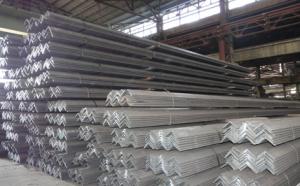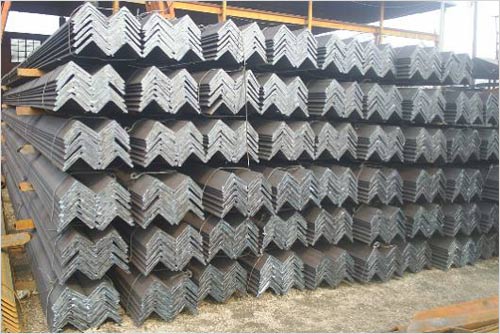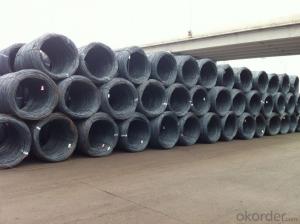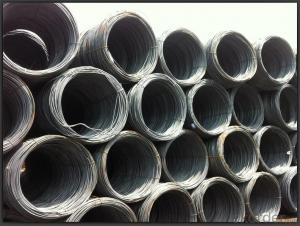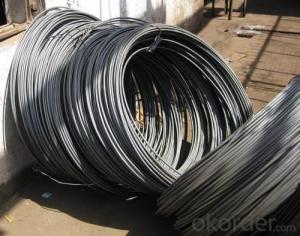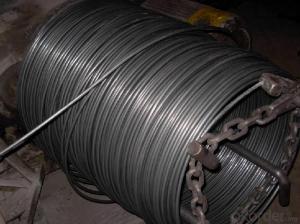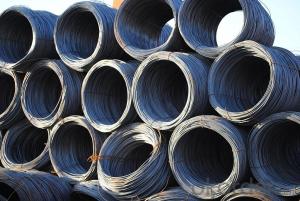Angle
- Loading Port:
- China Main Port
- Payment Terms:
- TT OR LC
- Min Order Qty:
- -
- Supply Capability:
- -
OKorder Service Pledge
OKorder Financial Service
You Might Also Like
Product Description:
Specifications of Angle Steel
1. Invoicing on theoretical weight or actual weight as customer request
2. Length: 6m, 9m, 12m as following table
3. Sizes

Sizes: 25mm-250mm | ||
a*t | ||
25*2.5-4.0 | 70*6.0-9.0 | 130*9.0-15 |
30*2.5-6.6 | 75*6.0-9.0 | 140*10-14 |
36*3.0-5.0 | 80*5.0-10 | 150*10-20 |
38*2.3-6.0 | 90*7.0-10 | 160*10-16 |
40*3.0-5.0 | 100*6.0-12 | 175*12-15 |
45*4.0-6.0 | 110*8.0-10 | 180*12-18 |
50*4.0-6.0 | 120*6.0-15 | 200*14-25 |
60*4.0-8.0 | 125*8.0-14 | 250*25 |
5. Payment terms:
1).100% irrevocable L/C at sight.
2).30% T/T prepaid and the balance against the copy of B/L.
3).30% T/T prepaid and the balance against L/C
6.Material details:
Alloy No | Grade | Element (%) | | ||||
C | Mn | S | P | Si | | ||
| | |||||||
|
|
|
|
|
|
| |
Q235 | B | 0.12—0.20 | 0.3—0.7 | ≤0.045 | ≤0.045 | ≤0.3 | |
|
|
|
|
|
|
| |
Alloy No | Grade | Yielding strength point( Mpa) | | ||||
Thickness (mm) | | ||||||
≤16 | >16--40 | >40--60 | >60--100 | | |||
≥ | | ||||||
|
|
|
|
|
| | |
Q235 | B | 235 | 225 | 215 | 205 | | |
Alloy No | Grade | Tensile strength (Mpa) | Elongation after fracture (%) | | |||
Thickness (mm) | | ||||||
| ≤16 | >16--40 | >40--60 | >60--100 | | ||
≥ | | ||||||
|
|
|
|
|
|
| |
Q235 | B | 375--500 | 26 | 25 | 24 | 23 | |
Usage & Applications of Angle Steel
According to the needs of different structures, Angle can compose to different force support component, and also can be the connections between components. It is widely used in various building structures and engineering structures such as roof beams, bridges, transmission towers, hoisting machinery and transport machinery, ships, industrial furnaces, reaction tower, container frame and warehouse etc.
Packaging & Delivery of Angle Steel
1. Packing: it is nude packed in bundles by steel wire rod
2. Bundle weight: not more than 3.5MT for bulk vessel; less than 3 MT for container load
3. Marks:
Color marking: There will be color marking on both end of the bundle for the cargo delivered by bulk vessel. That makes it easily to distinguish at the destination port.
Tag mark: there will be tag mark tied up on the bundles. The information usually including supplier logo and name, product name, made in China, shipping marks and other information request by the customer.
If loading by container the marking is not needed, but we will prepare it as customer request.
Production flow of Angle Steel
Material prepare (billet) —heat up—rough rolling—precision rolling—cooling—packing—storage and transportation
- Q: How is steel wire rod used in the production of wire mesh sieves?
- Wire mesh sieves require steel wire rod as an essential component. The wire rod undergoes various processes, such as drawing, annealing, and coating, to improve its strength and durability. Once prepared, the steel wire rod is fed into a wire drawing machine to reduce its diameter to the desired size. This ensures uniform thickness and a smooth surface, which is crucial for subsequent manufacturing steps. After drawing, the wire is annealed to increase flexibility and remove any residual stresses. This makes it easier to work with and less likely to break during production. Next, the wire is coated with zinc or PVC to enhance its resistance to corrosion. This protective layer acts as a barrier, prolonging the wire's lifespan and maintaining its structural integrity. The coated wire is then woven or welded to create the wire mesh sieve. Weaving involves interlacing the wires in a crisscross pattern, while welding involves fusing the wires at their intersections using heat and pressure. The resulting wire mesh sieve is a versatile and reliable tool used in various industries. It is commonly employed for particle size analysis, filtration, and sorting applications. The steel wire rod used in its production ensures it can withstand high pressures and abrasion, making it suitable for demanding environments. In conclusion, steel wire rod plays a crucial role in the manufacturing process of wire mesh sieves. It undergoes drawing, annealing, and coating before being woven or welded to create the final product. The resulting wire mesh sieve is a robust tool used in a wide range of industries for particle analysis and filtration purposes.
- Q: How is steel wire rod used in the manufacturing of wire forms for playground equipment?
- In the production of wire forms for playground equipment, steel wire rod plays a vital role. Made from high-quality steel, the wire rod comes in different diameters to meet various needs. To manufacture wire forms for playground equipment, the steel wire rod undergoes several manufacturing steps. Initially, it is fed into a machine that cleans and eliminates any impurities from its surface, ensuring its cleanliness for further processing. Subsequently, the wire rod passes through a drawing machine that reduces its diameter to the desired size. This process involves pulling the wire rod through a series of dies, gradually decreasing its diameter while increasing its length. This drawing process not only shapes the wire but also enhances its strength and durability. Once the wire reaches the desired diameter, it undergoes annealing to relieve internal stress and improve its malleability. This facilitates the bending and shaping of the wire into the required forms for playground equipment. Following the annealing process, the wire is ready for forming. During this stage, specialized machines and tools are used to bend, twist, and shape the wire into various components such as hooks, loops, spirals, and curves, according to the specific design requirements of the playground equipment. Subsequently, the formed wire undergoes a heat treatment process called quenching and tempering, further enhancing its strength and durability to withstand the demands of playground use. Finally, the wire forms are coated with a protective finish, such as galvanization or powder coating, to prevent corrosion and extend their lifespan. The choice of coating material depends on the specific requirements of the playground equipment. In conclusion, steel wire rod is an essential component in the manufacturing process of wire forms for playground equipment. Its strength, durability, and malleability make it the ideal material for creating safe and reliable wire forms that can withstand the rigors of playground use.
- Q: How is steel wire rod used in the manufacturing of wire forms for fishing nets?
- Steel wire rod is a crucial component in the manufacturing of wire forms for fishing nets. The wire rod serves as the raw material from which the wire forms are created. Firstly, the steel wire rod is processed through a series of steps to transform it into a usable wire form. This includes cleaning, annealing, and drawing the wire rod to achieve the desired diameter and tensile strength. These processes ensure that the wire is strong and flexible enough to withstand the tension and stress it will experience when used in fishing nets. Once the wire rod is transformed into wire, it is then used to create the various wire forms required for fishing nets. These wire forms include various components such as hoops, rings, loops, and connectors that are essential for constructing a functional fishing net. The wire forms are created using specialized machinery and techniques, including bending, cutting, and welding the wire according to the specific design requirements. These wire forms are then assembled together to form the net structure. The use of steel wire rod in the manufacturing of wire forms for fishing nets provides numerous advantages. Steel is known for its high strength and durability, making it ideal for withstanding the harsh conditions and constant tension that fishing nets are subjected to. Additionally, steel wire rod is resistant to corrosion, ensuring that the wire forms will have a long lifespan even when exposed to water and other environmental factors. In conclusion, steel wire rod is a vital component in the manufacturing of wire forms for fishing nets. It serves as the raw material from which the wire forms are created, providing the necessary strength, flexibility, and durability required for a functional fishing net.
- Q: What are the quality standards for steel wire rod?
- Various organizations and industry specifications define the quality standards for steel wire rod. These standards guarantee that the steel wire rod satisfies specific criteria and performance requirements. One widely acknowledged standard for steel wire rod is the ASTM A510/A510M specification from the American Society for Testing and Materials (ASTM). This standard outlines the chemical composition, mechanical properties, and dimensional tolerances for steel wire rod. It dictates the necessary levels of carbon, manganese, sulfur, phosphorus, and other elements, as well as the tensile strength, yield strength, and elongation properties. Apart from ASTM, other organizations like the International Organization for Standardization (ISO), European Committee for Standardization (EN), and Japanese Industrial Standards (JIS) have their own standards for steel wire rod. These standards may have minor variations regarding chemical composition, mechanical properties, and testing methods, depending on the region and intended application. The quality standards for steel wire rod also encompass specific requirements for surface quality. This includes the absence of cracks, seams, and other defects, with a smooth surface that is free from scale or excessive rust. Steel wire rod manufacturers conduct various tests and inspections during the production process to ensure compliance with these standards. These tests may include chemical composition analysis, mechanical property testing, surface inspection, and dimensional checks. Additionally, independent certification bodies may provide third-party verification of the product's quality and adherence to the specified standards. Ultimately, the quality standards for steel wire rod aim to guarantee that the product meets the requirements for its intended use, whether it is in construction, automotive, manufacturing, or any other industry where steel wire rod is used.
- Q: What are the major trade associations and organizations in the steel wire rod industry?
- The steel wire rod industry comprises numerous significant trade associations and organizations. Among them are the following prominent ones: 1. American Wire Producers Association (AWPA): AWPA serves as a trade association that represents manufacturers of steel wire and wire products in North America. Its primary focus lies in promoting the industry's interests, offering technical expertise, and facilitating networking opportunities for its members. 2. International Wire & Machinery Association (IWMA): IWMA operates as a global trade association that brings together companies involved in wire and cable production and processing. It arranges industry events, provides market intelligence, and fosters collaboration and knowledge-sharing among its members. 3. Wire Association International (WAI): WAI functions as a non-profit organization dedicated to advancing, educating, and innovating the wire and cable industry. It offers educational resources, organizes technical conferences and exhibitions, and provides networking opportunities for professionals in the field. 4. European Steel Association (EUROFER): EUROFER represents the European steel industry, including manufacturers of wire rods. Its objective is to promote a competitive and sustainable steel industry in Europe. EUROFER advocates for its members' interests at the European Union level and offers industry-related information and services. 5. China Iron and Steel Association (CISA): CISA serves as a national trade association that represents the Chinese iron and steel industry, including wire rod producers. It plays a crucial role in policy advocacy, market research, and coordination among stakeholders in China's industry. These trade associations and organizations play a vital role in supporting the steel wire rod industry. They provide a platform for collaboration, knowledge-sharing, and addressing common challenges. Furthermore, they serve as valuable resources for industry professionals, offering technical expertise, market information, and networking opportunities.
- Q: What are the major risks and uncertainties in the steel wire rod industry?
- The major risks and uncertainties in the steel wire rod industry include fluctuations in raw material prices, such as iron ore and scrap metal, which can impact production costs and profitability. Market demand and competition can also pose risks, as changes in consumer preferences or economic conditions can affect the demand for steel wire rods. Additionally, regulatory changes and environmental concerns surrounding the industry's carbon emissions and sustainability practices can introduce uncertainties. Technological advancements and automation may also impact the industry, requiring companies to adapt and invest in new equipment and processes to remain competitive.
- Q: What are the different surface treatments available for steel wire rod?
- There are several surface treatments available for steel wire rod, including galvanizing, phosphating, and coating. Galvanizing involves applying a layer of zinc to the surface of the wire rod to protect it from corrosion. Phosphating is a chemical process that creates a thin layer of phosphate on the surface, which improves adhesion for subsequent coatings or paints. Coating can involve applying various materials such as epoxy, polyvinyl chloride (PVC), or polyethylene to provide additional protection and enhance the wire rod's properties.
- Q: How is steel wire rod used in the production of screws?
- Steel wire rod is used in the production of screws as it serves as the raw material for manufacturing the screw's main body. The steel wire rod is first processed through various steps like drawing, rolling, and cutting to form the desired dimensions and shape of the screw. This process ensures that the wire rod is transformed into a strong and durable screw, capable of securely fastening objects together.
- Q: What are the different types of wire drawing processes used for steel wire rod?
- There are several types of wire drawing processes used for steel wire rod, including single block, multi-block, and continuous wire drawing. In the single block wire drawing process, the wire rod is passed through a single die to reduce its diameter. In the multi-block wire drawing process, multiple dies are used in sequence to further reduce the wire diameter. Continuous wire drawing involves passing the wire rod through a series of dies in a continuous manner to achieve the desired diameter. Each of these processes offers different benefits and is used based on the specific requirements of the steel wire rod.
- Q: How is steel wire rod used in the manufacturing of electrical conductors?
- Steel wire rod is used in the manufacturing of electrical conductors as it provides the necessary strength and flexibility required to transmit electricity efficiently. The wire rod is drawn into thin wires which are then insulated and used as the core of electrical cables. These conductors are widely used in power transmission lines, electrical wiring systems, and various electrical appliances to ensure the safe and reliable flow of electricity.
Send your message to us
Angle
- Loading Port:
- China Main Port
- Payment Terms:
- TT OR LC
- Min Order Qty:
- -
- Supply Capability:
- -
OKorder Service Pledge
OKorder Financial Service
Similar products
Hot products
Hot Searches
Related keywords
